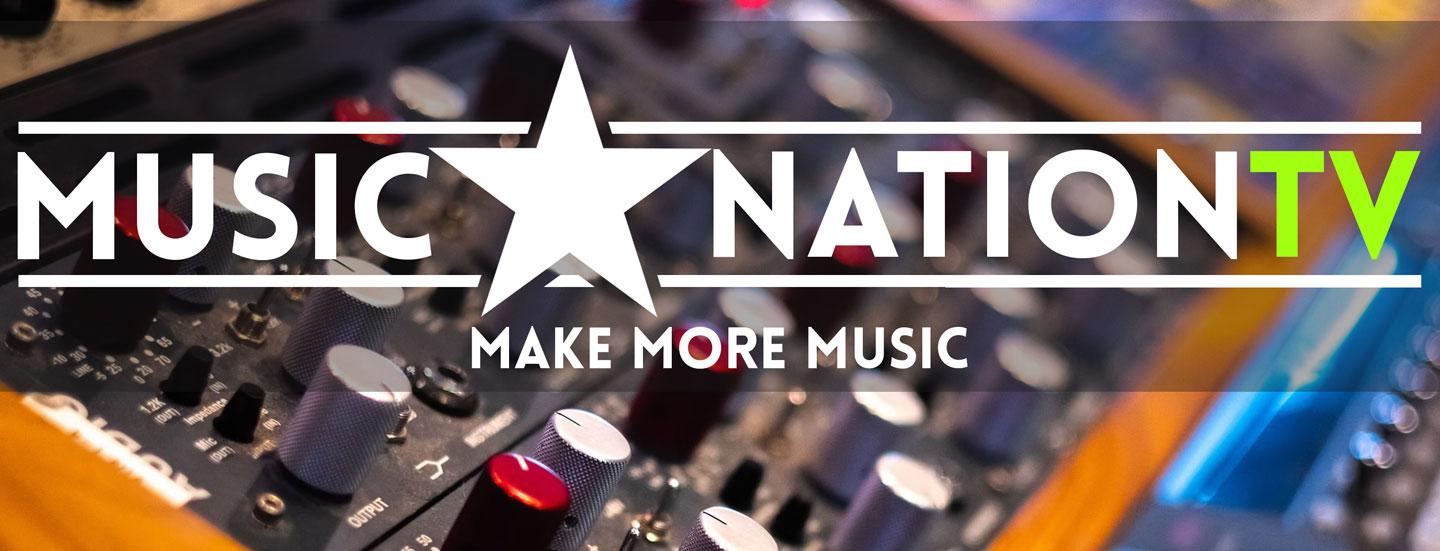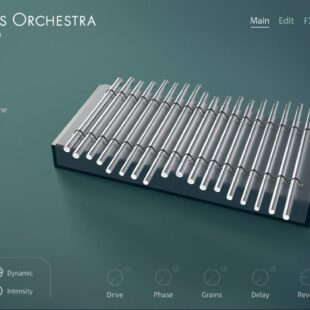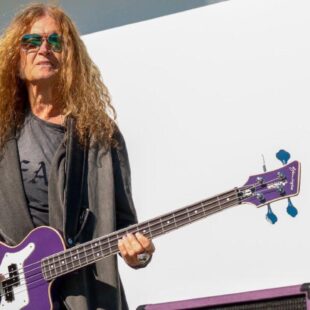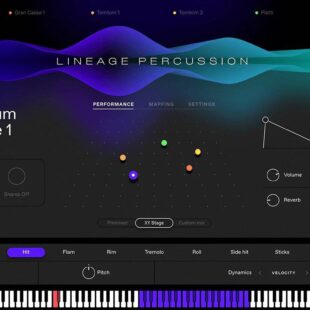Spitfire Audio Fracture Strings
Hello and welcome to Music Nation TV. We are delighted that you could join us. This week, we are presenting an intriguing string library from Spitfire Audio who have once again presented a niche instrument library that we didn’t know we needed. Fractured Strings aims to play a supportive role alongside your existing core orchestral libraries, and it might be a brilliant move from Spitfire to enhance the flexibility of your previously purchased titles.
On paper Fractured Strings seems rather limited, a phrase library contains only violin and cello with no standard articulations. It’s best to give Spitfire Audio the benefit of the doubt and trust there is more under the hood than what first appears, so let’s crack on and see what this is all about.

Overview
Spitfire Audio Fracture Strings is a sample library for violin and cello phrases, using the company’s exclusive non-Kontakt platform, an EVO Grid, and a new Scale Mode player. Each features twelve mix signals and three custom mic mixes from the recording that took place at AIR Studios’ Lyndhurst Hall in London, UK. The entire library was created in collaboration with Hans Zimmer’s super-collective, Bleeding Fingers.
Despite the inclusion of an eight-piece ensemble of violin and cello, along with two soloists, Fracture Strings does not contain traditional long, short, or tremolo-type articulations. Instead, it offers phrases recorded as full mini-performances, aiming to convey a more human feel and emotion that regular MIDI programming cannot achieve.
These phrases are categorized using unique terminology, such as fractures, statements, splinters, rotations, and dispersals. To fully grasp the library’s offerings, you will need to become familiar with this specific lingo. A comprehensive list of included articulations with their definitions can be found on the Spitfire Audio website.
The library was produced with the BBC series Frozen Planet 2 in mind, resulting in a distinctively raw, icy, and clean sound due to the pairing of cello and violin instrumentation.
First impressions
This is quite a substantial download, totalling 88 gigabytes, and initially, I was surprised to find that it only contained two instruments. However, the extensive selection of microphone choices significantly contributes to the size of the libraries.
It’s unfortunate that Spitfire Audio doesn’t offer a more affordable “lite” version, or perhaps an option to only download mix recordings instead of the full microphone select to save disk drive space.
Once the installation and loading process was complete, it became immediately evident that this is not your typical string library.
Playing the phrases requires some adjustment as you need to let them ring out throughout the entire recording. While many of the phrases are short, they still demand time for the notes to develop and resolve. Consequently, even the briefest patches experience a noticeable lag between your keypress and the sound response.
Since a “phrase” is a recorded passage in time, it will naturally sound out of sync when not played in time with other notes. This can be likened to starting two identical MP3 songs simultaneously, which would result in perfect stereo if timed right, but a chaotic mish-mash if not. Thus, you are compelled to play notes or chords as single keypresses and let them sustain before playing another. Timing the crescendos becomes a matter of practice and sometimes mere luck.
Adding to the challenge, most of the phrases are tempo locked, creating a feeling of playing at their own pace, regardless of the tempo you desire to set.
In use
As it turns out, I approached this library from the completely wrong angle. Instead of being a fundamental tool for creating orchestrations, it serves as a supportive library, adding life and texture to your other core sample libraries.
A good example of this is the clever Scale Mode. The scale mode limits the played note range to fit within a predefined scale, however, this has the clever third dimension of velocity added which in effect gives you random points of interest depending on how hard to play. Further, the mod wheel can be used to affect volume, each combined to elevate the simple phrase recordings into something much more dynamic and expressive.
There is both an element of chance and control when playing the scale mode, which while providing excellent random moments of brilliants, can result in dissonant rubbish.
Some may love this characteristic, but others like myself may get frustrated with the limited control. Phases have the ability to provide convincing performances that are difficult to recreate using MIDI.
However, the major downside to using phrases is that you must write music that fits the key, tempo, and style of the recorded material. Holding down articulated chords won’t sustain a note indefinitely; instead, it plays a set phrase. While this adds the feel and humanity of a live recording, it makes placing these phrases in prearranged music more of a trial-and-error process. Essentially, it’s like the orchestra telling the composer what to write.
On a positive note, I do appreciate the ability to create custom patches from the articulation editor. This feature allows you to pull any articulation into your own custom patch, essentially mirroring what the Evo Grid does, but in a more familiar GUI. This is especially useful if you prefer the GUI over the grid interface or if you want to use key switching.
The Sound
AIR Studios sounds huge, even with the reverb rolled completely off. It is a very interesting sound from the somewhat intimate-sounding instruments set against this huge reverberant environment.
Some might find this too thick, especially if you are writing with dryer libraries. But the likelihood is that you will want to add more reverb to your backing arrangement to match Fractured Strings. Fortunately the reverb and room ambience sound absolutely amazing, with no hint of digital processing or anything like that.
The instruments are recorded in a very central way, meaning they don’t mix well together without panning in the DAW, somewhat ruining the sound stage image. I found Fracture Strings works best layered on other libraries that do have separation in the instruments, giving it more character and texture and coving up the stereo width.
Of course, this is not a stand-alone instrument and will need multiple other orchestral libraries to work with. Appasionata Strings is an ideal partner due to the same recording location as Air Studios.
Conclusion
This is a wonderful phrase library with some clever technology to humanize the recordings as much as possible. The recordings themselves are outstanding, with occasional little string rasps or squeaks that prevent the round robins from sounding too robotic.
The massive 88-gig file size is due to all the extra, and often unused, mic positions. It would be great to have a “lite” version that only downloads the core mic mixes, significantly saving hard drive space and possibly reducing the retail price.
For film scoring, I believe this library could be an indispensable tool. There are other similar libraries on the market, like Heavyocity Novo and ProjectSam’s Lumina 3, offering pre-recorded phrases.
Like all phrase libraries, it’s challenging to escape the fundamental sound of the library itself. The demos on Spitfire’s website showcase similar wave crescendos and trills. While it has a fairly unique sound, it may be easily recognizable unless you spend an extraordinary amount of time customizing and modulating it to create something different.
Thus, I find myself torn about how to rate this library. On one hand, it produces heart-breakingly beautiful sounds through incredible recordings. On the other hand, it lacks flexibility and is rather predictable sounding.
The trick with Fractured Strings is to use it in combination with other libraries. It works best when blending and complementing other arrangements, making occasional appearances to add flavour and interest. Similar to Spitfire’s Mercury synth, I feel this is designed more to add colour to your work, like seasoning or spice to your stew.
Another positive aspect is the growing collection of libraries catering to very specific needs. While priced at $299 USD, it’s not a casual purchase. However, if you can think outside the box and utilize its full potential, there is a lot to discover and explore here.
Full details and purchasing information on the Spitfire Audio website

Like the review? Shout us a cup of coffee!








